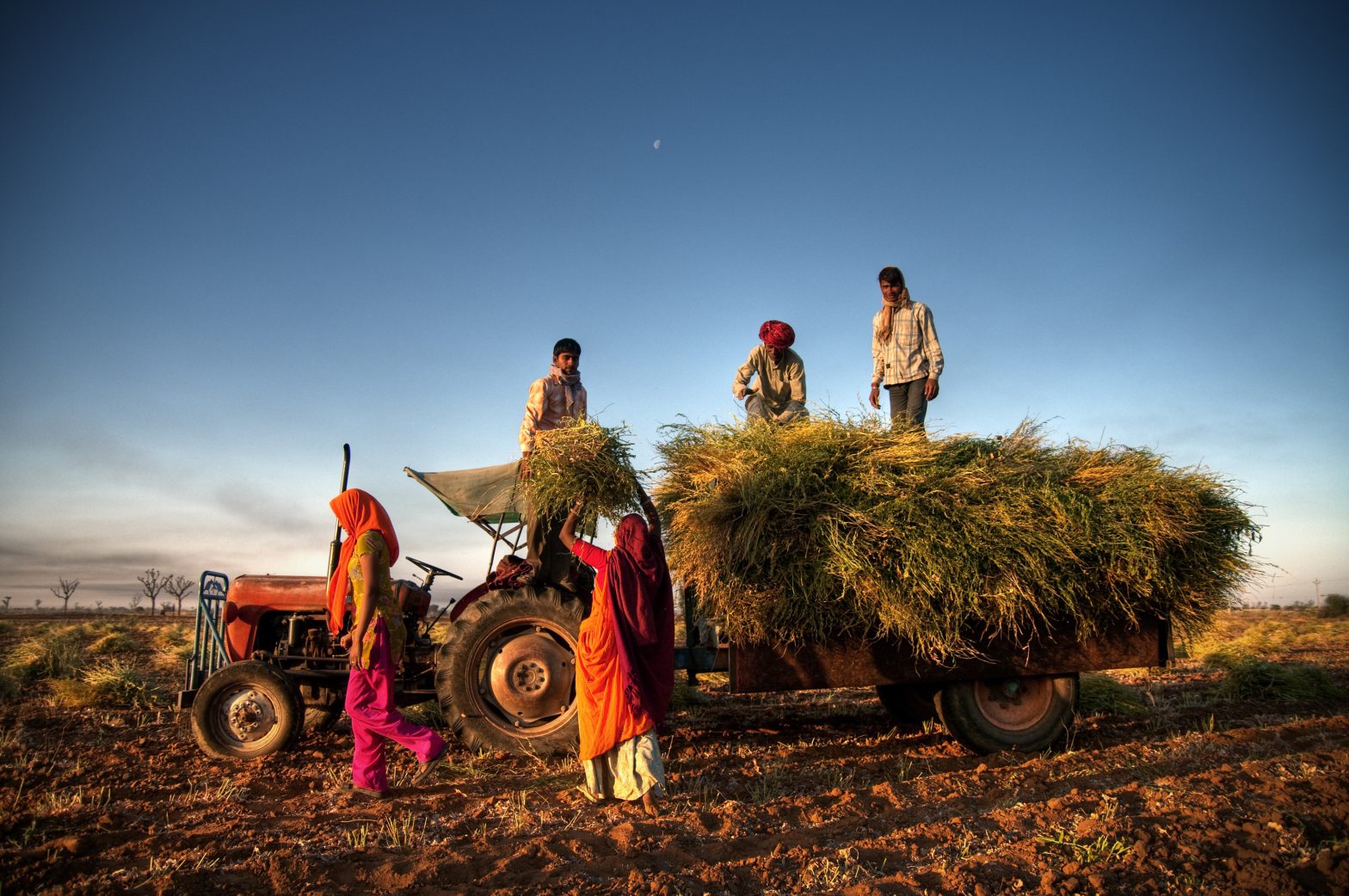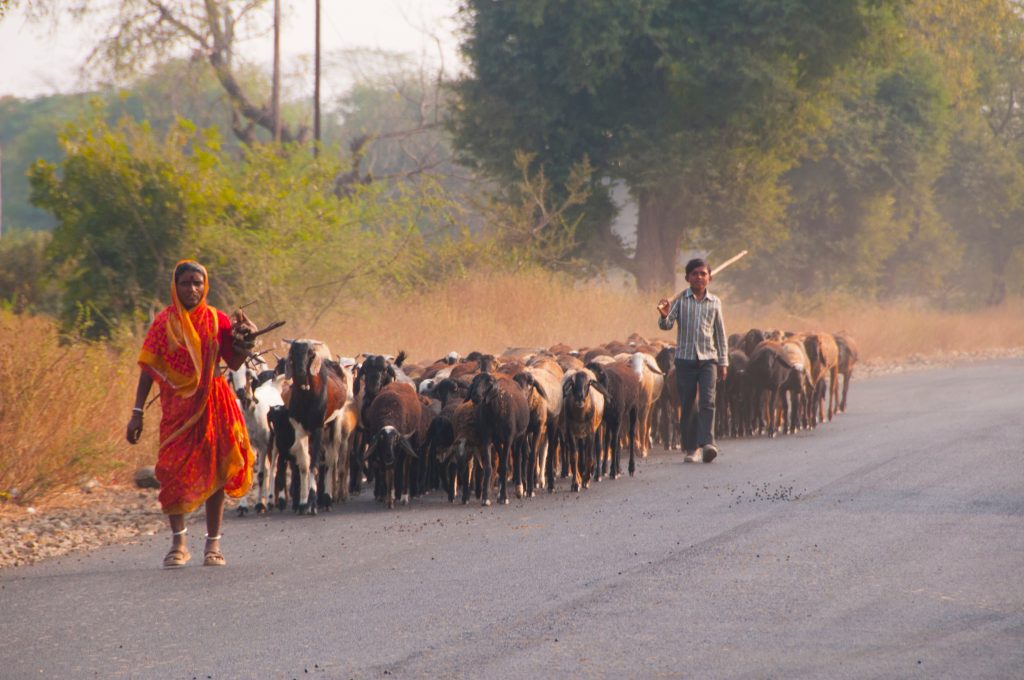
What this interim budget holds for rural India
While the Rural Development Ministry got increased allocation, with MGNREGS getting a boost, not all schemes saw hikes in the interim budget 2024-25 presented by the Union government on Feb 1.

While the Rural Development Ministry got increased allocation, with MGNREGS getting a boost, not all schemes saw hikes in the interim budget 2024-25 presented by the Union government on Feb 1.
Recounting the government’s economic successes over the last 10 years, Union Finance Minister Nirmala Sitharaman presented the interim budget for financial year 2024-25 on February 1.
The budget comes against the backdrop of a forecasted 7.3 percent annual growth for the current fiscal year, marking the highest rate among the major global economies. But this is not the whole picture.
There is a growing gap between India’s urban and rural economic health. Growth in the agriculture sector, constituting approximately 15 percent of the GDP and employing over 40 percent of India’s workforce, has slowed down tremendously. It is projected to grow at 1.8 percent in the current fiscal year, down from last year’s four percent.
Further, the heightened demand for jobs under MGNREGS (Mahatma Gandhi National Rural Employment Guarantee Scheme), the government’s rural job guarantee initiative, and rising retail inflation in rural areas, indicates a level of economic distress for rural India.
In the interim budget 2024-25, Rs 1,77,562 crore has been allocated to the Ministry of Rural Development, 13 percent more than the allocated budget for 2023-24. However, it is only three percent higher than the revised estimates (a mid-year review of possible expenditure) for 2023-24.
While the Ministry of Defence received the highest budgetary allocation (Rs 6.2 lakh crore) in the interim budget, the Ministry of Agriculture and Farmers Welfare received the least (Rs 1.27 lakh crore).
Given that this is an election year, the finance minister also highlighted the major successes of the government during her budget speech. Notably, she announced that using PM-Jan Dhan accounts has led to savings of Rs 2.7 lakh crore for the government.
An interim Union budget, also known as vote on account, is a financial plan presented by the government during an election year. It is a provisional budget that covers the government’s expenses for a few months until the new government presents a full budget after the elections in July.
The interim budget is different from the regular Union budget in several ways. Importantly, the interim budget does not introduce any new policies or schemes.
“I am not going to play spoilsport but it is a matter of truth that the February 1 budget will just be a vote on account. We are in election mode and the election happens during the coming summer. So the budget that the government presents will just be a budget to meet the expenditure of the government till a new government comes into play,” Sitharaman said at the Confederation of Indian Industry’s Global Economic Policy Forum in December 2023.
The Ministry of Agriculture and Farmers Welfare received Rs 1.27 lakh crore for 2024-25, marginally higher than the Rs 1.25 lakh crore in 2023-24.
“There is a need to put in more efforts by the government and explore public-private partnerships to boost farmers’ incomes,” Saroj Mahapatra, Executive Director of PRADAN, told Village Square.

Rs 14,600 crore has been allocated to the government’s flagship crop insurance scheme, which is Rs 400 crore less than the revised estimate of Rs 15,000 crore spent in 2023-24.
Budget for PM-AASHA – another key government scheme aimed at ensuring fair prices for farmers’ produce – has been reduced to Rs 1,738 crore from the revised estimate of Rs 2,200 crore in 2023-24.
Fund allocation for Pradhan Mantri Kisan Samman Nidhi (PM-Kisan) remained the same at Rs 6,000 crore. Under this scheme, an income support of Rs 6,000 per year is provided to all farmer families across the country in three equal installments every four months.
There is a 43 percent increase from the Rs 60,000 crore allocated in the last budget for MGNREGS. This flagship rural job guarantee scheme received Rs 86,000 crore for 2024-25. However, this figure is the same as the revised estimate for 2023-24.
“Since this is a demand-driven scheme and is based on the actual needs and priorities of the people in rural areas, targeted investment in the specific geographies is required. More budgets may be provisioned in the supplementary budget to strengthen the rural economy,” said Mahapatra.
“At the heart of the budget is the recognition of the crucial role that women play in driving India’s growth story. The ‘lakhpati didi’ initiative stands out as a testament to this commitment, with over 83 lakh Self-Help Groups empowering women across rural India,” said Sirish Kalyani, Associate Director at Transforming Rural India (TRI).
Sitharaman announced that the target of lakhpati didi has been increased from 2 crore to 3 crore women.
The government has also decided to extend the healthcare insurance cover under Ayushman Bharat scheme to all anganwadi and ASHA workers.
The National Health Mission saw a 12 percent increase in allocation, from Rs 33,886 crore (revised estimate for 2023-24) to Rs 38,183 crore.
The government has allocated Rs 73,008 crore for the Department of School Education and Literacy. This is 0.7 percent higher than the revised estimate for 2023-24.
The Jal Jeevan Mission, which aims to provide direct water supply in every household, received a marginal increase of Rs 163 crore.
The lead image at the top shows farmers harvesting crops, near Jaipur (Photo by Shutterstock)
Rahul Raman is one of the team members at Village Square.